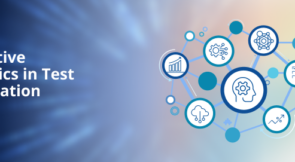AI is no mere buzzword or fad; it’s a real, valuable technology with far-reaching implications in business, education, and society at large. Of course, AI also affects software testing. And that’s why we’re here today to talk about AI testing.
Yes, AI testing is a thing, and it’s especially valuable in the web development world. In this space, AI-powered tools can be leveraged to solve persistent problems in software testing, making testing activities way more efficient. Let’s learn more about it in this guide.
Before AI Testing, There Was AI
Of course, everyone knows that AI stands for Artificial Intelligence. But what does that mean in practice? How do AI-powered programs differ from regular ones?
Artificial Intelligence: Brief Definition and Overview
In his 2004 paper, John McCarthy defines AI as follows:
It is the science and engineering of making intelligent machines, especially intelligent computer programs. It is related to the similar task of using computers to understand human intelligence, but AI does not have to confine itself to methods that are biologically observable.
People often say that AI consists of trying to create machines that mimic human intelligence. That makes sense since we’ve been the only instance of intelligent life we know of until now. However, per McCarthy’s definition above, you can see that AI doesn’t have to restrict itself to mimicking human intelligence.
Expand Your Test Coverage
AI in 2021: What Does It Look Like?
The dawn of AI dates back to the 50s. However, in the last two decades, practical applications for AI skyrocketed. These include recommendation systems for e-commerce websites and entertainment services, image recognition, language translation, gaming, medical diagnosis, and much more.
Currently, when most people talk about AI, they are describing machine learning. In short, machine learning is the capacity of machines/algorithms to learn and improve their efficiency, not only via training but also from their real-world experiences in production.
AI Testing
What Is AI Testing?
In a nutshell, AI testing consists of using tools for automated software testing that leverage AI—usually, machine learning—to generate better results.
The idea is that, with the help of AI, those tools can overcome many of the common hurdles of automated software testing. Common challenges that AI tools can help with include:
- slow execution of tests
- excessive test maintenance due to a fragile test suite
- creating high-quality test cases
- duplicated efforts in testing
- insufficient test coverage
How Is AI Used in Testing?
There are several AI-powered testing tools out there, and they don’t all focus on the same problems or the same steps in the testing lifecycle.
What’s common for all tools and approaches is that AI testing intends to optimize automated testing. As mentioned, AI tools do that by reducing or completely removing obstacles that get in the way of an even more efficient test strategy.
Let’s go back to the list in the previous section and explain how AI testing could solve—or at least remediate—each of those problems.
Slow Test Execution
No one likes a test suite that takes forever to run. AI testing tools can help ease that pain in several ways:
- They can optimize your test data management strategy, ensuring quality data reaches test cases faster.
- They can figure out only the bare minimum of tests that need to be executed after a given change in the codebase, accelerating the CI/CD pipeline.
- Finally, they might be able to identify unnecessary/duplicated test cases, forgoing their execution.
Excessive Test Maintenance
Web apps can change frequently. Fragile tests may break easily with any change to the codebase, especially when identifiers of elements on the page, such as the CSS class of a button, change, and the test tool can no longer find the elements.
An AI-powered tool like Testim Automate can solve that by using machine-learning to create a more sophisticated strategy for locating elements on the page, which results in more robust tests.
Creation of High-Quality Test Cases
It’s often hard to author valuable test cases. AI can help there as well, with testing tools that can generate test cases in the unit and even API level.
Test automation tools can also help create well-designed tests by identifying existing, reusable components that can be called rather than duplicated.
Waste in Testing Efforts
We’ve already touched briefly on this. Within a vast test suite, you’ll often find test cases there aren’t strictly necessary because they duplicate efforts of different test cases. Individually, they might not make a big difference, but they can add up during test execution. AI testing tools might identify and remove—or at least skip during execution—those test cases.
Moreover, such checks could be made preemptively during coding, warning engineers when they’re about to include an unnecessary test case.
Even more, you might find parts of a test case frequently repeated across multiple test cases. Do you need to test that component numerous times? Replacing those test steps with a known and proven reusable group can help ensure your test case completes consistently.
Low Test Coverage
Test coverage—not to be confused with code coverage—measures how comprehensively tested your app is regarding its functionalities, product requirements, and main points of risk.
AI-powered testing tools could help us there as well. By evaluating past exploratory testing sessions, an AI tool could determine and create new test cases to ensure more comprehensive coverage. That would be particularly helpful if coupled with a risk-based approach, in which the tool examines metrics from the application to determine:
- which portions of the app are more likely to break
- from those, which ones are potentially more damaging if they were to fail
AI Testing Tools You Need to Be Aware of
You’ve just learned about AI testing in more detail. Before wrapping up, let’s review some of the AI-powered tools at your disposal so you can commence your AI-testing journey today.
Diffblue Cover
Diffblue cover is an AI tool for unit test generation. The tool currently works for Java code and is available both as a plugin for the IntelliJ IDEA and as a CLI tool.
As you write your programs, it analyzes your codes and creates unit tests that match what you’ve implemented.
The generated tests act as a regression-testing suite, so you’ll be warned when something changes in the application.
FBInfer
Facebook Infer is a static analysis tool that uses AI to identify possible bugs in source code before shipping it to production. It’s shift left testing at its finest.
You might be wondering how Infer differs from linters. Here’s the answer straight from the tool’s FAQ:
Infer finds deeper infer-procedural bugs sometimes spanning multiple files. Linters, in contrast, typically implement simple syntactic checks that are local within one procedure. But they are valuable and Infer doesn’t try to duplicate what they are good at.
GitHub Copilot
If you’re aware of GitHub Copilot—and, as a software engineer, I’d be surprised if you weren’t—you might think this one is a stretch. Sure, GitHub Copilot isn’t a testing tool, technically speaking. It’s an AI-powered coding assistant.
I’ve included it for two reasons, though. First, Copilot might be like a smarter coworker that’s by your side, helping you improve your code and thus introduce fewer bugs. I think that’s the ultimate shift-left testing.
Also, if you browse forums like Reddit and Hacker News, you’ll see many engineers expressing the idea of Copilot as a unit test generator. I can certainly see it going in that direction in the not-so-distant future.
Testim Automate
Testim Automate is a test automation platform that leverages machine learning to solve two of the most enduring pains of software testing: slow test authoring and high test maintenance.
With Testim, people with no coding skills can quickly create end-to-end tests by using its record functionalities. Engineers can use code to extend those capabilities, creating a hybrid, “best of both worlds” approach.
When it comes to the test maintenance problem, Testim solves that with its innovative smart locators approach, which analyzes each element used during testing, attributing weights to hundreds of attributes of each element. That way, even if one property of the element—say, its ID—changes, Testim will still locate it, preventing the test from failing. And all of that is easy, not requiring the usage of complex and fail-prone queries.
Embrace the Future: AI Testing Is Here to Stay
In the last two decades, the rising use of automation in software testing—and the software development lifecycle in general—changed how software is planned, developed, and shipped. Test automation helped enable CI/CD and DevOps, allowing organizations to ship high-quality code faster than ever before.
As we start this new decade, another game-changer has already shown up: AI testing. As you’ve seen in this post, AI testing can bring considerable benefits to organizations, helping test automation finally reach its full potential.
We’ve said it already, but we’ll repeat it: Artificial intelligence is the future of testing. And I, for one, welcome our new AI helpers.



